Taiwan << ty wahn >> is a mountainous island in the South China Sea, a part of the Pacific Ocean. Taiwan lies about 90 miles (140 kilometers) off the Chinese coast. The Taiwan Strait separates the island from mainland China.

Taiwan’s political status has been a subject of dispute since the mid-1900’s, when Chinese Communists and Chinese Nationalists clashed over control of China. After the Chinese Communists seized power on the Chinese mainland in 1949, the Chinese Nationalists, under the leadership of Chiang Kai-shek, moved to Taiwan. The Nationalists declared Taipei, a city at the northern end of Taiwan, the capital of the Republic of China (ROC). Chiang refused to recognize China’s Communist government, which had established the People’s Republic of China (PRC) on the mainland. His Nationalist government also established control over several islands in the Taiwan Strait, including the Quemoy, Matsu, and Pescadores groups. Today, the People’s Republic of China claims that Taiwan is a PRC province, but Taiwan remains effectively independent.
In Chinese, Taiwan means terraced bay. The island’s wild, forested beauty led Portuguese sailors in 1590 to name it Ilha Formosa, meaning beautiful island.
Government.
The ROC government of Taiwan is based on a constitution adopted in 1946 on the Chinese mainland. Since the 1980’s, the Constitution has been amended several times, and Taiwan’s government has become democratic. The Constitution provides for five branches of government—executive, legislative, judicial, control, and examination. Each branch, or yuan, is headed by a president. The head of state is the president of the Republic of China.
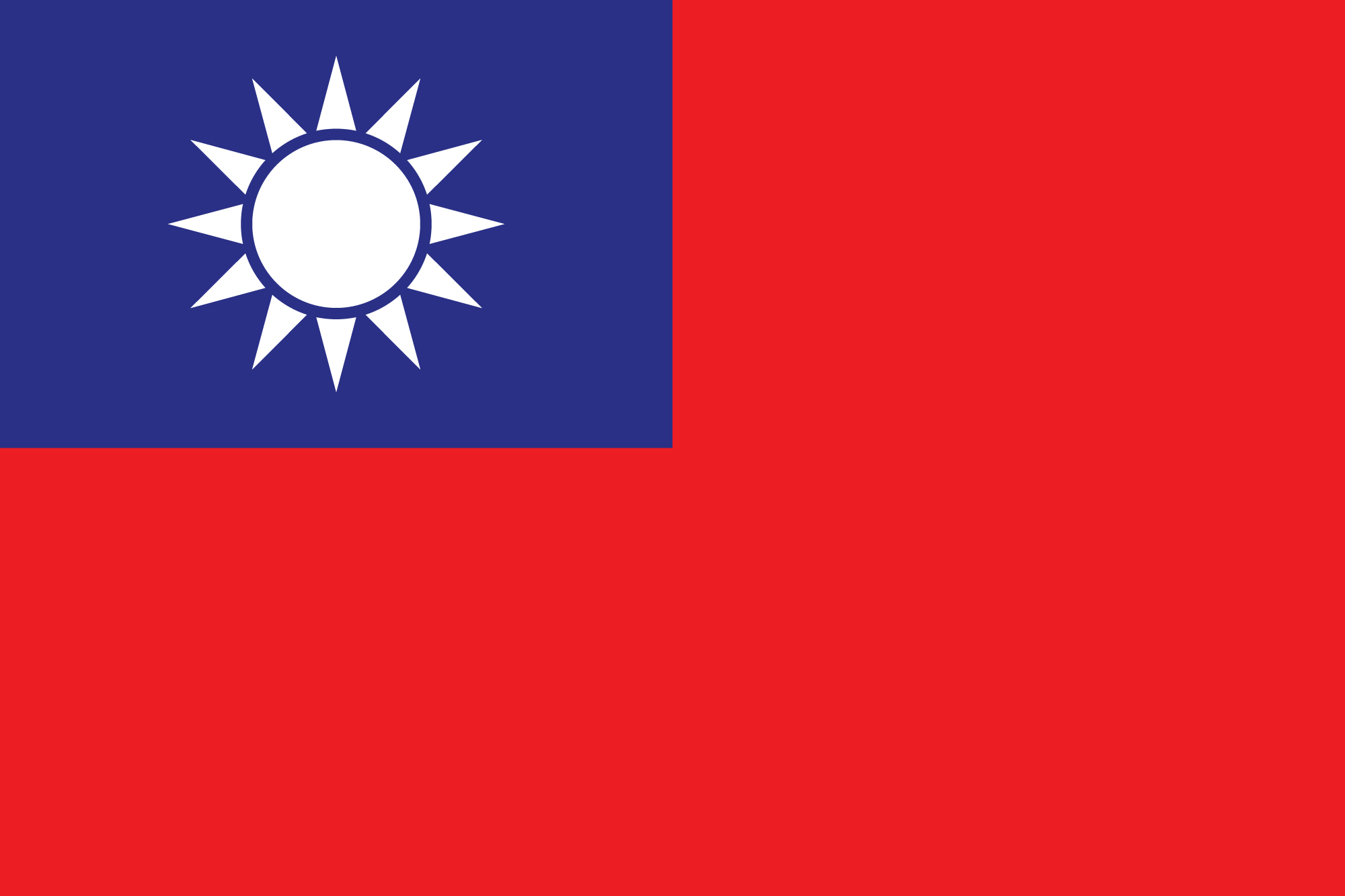
The president is elected by the people to a four-year term. The president appoints a premier to head the Executive Yuan, which carries out the operations of the government. The premier is also known as the president of the Executive Yuan.
Loading the player...Taiwan national anthem
The Legislative Yuan makes most of Taiwan’s laws. It also approves the appointment of the premier. Voters directly elect about two-thirds of the Legislative Yuan. The remaining one-third is chosen by proportional representation. Under this system, voters cast a ballot for a political party, and legislative seats are assigned to each party according to its share of the vote. Candidate lists prepared by the parties help ensure representation for certain minority groups.
The Judicial Yuan is Taiwan’s highest court. Its president is also the chief justice. The Control Yuan reviews activities of government officials and has the power of impeachment. The Examination Yuan gives tests for hiring and promoting government workers.
Taiwan’s leading political parties are the Kuomintang (KMT, also known as the Nationalist Party) and the Democratic Progressive Party (DPP).
People.
Most Taiwanese people are of Chinese descent. Nearly 2 million people fled to Taiwan from mainland China just before the Communists took power in 1949. A small percentage of Taiwan’s population are non-Chinese Indigenous (native) peoples, also known as Aboriginal peoples of Taiwan. They are related to the original inhabitants of other Pacific islands.

Most of Taiwan‘s population lives on the coastal plain that makes up the western third of the island. Rapid industrial development in this region has led to air and water pollution, forcing the government to address these concerns. Most of Taiwan’s Indigenous peoples live in the mountains.
About four-fifths of Taiwan’s people live and work in urban areas. Huge open-air street markets operate after dark in many cities, attracting large crowds. Taiwan’s people wear clothing similar to that worn by North Americans and Europeans. About 5 percent of Taiwan’s people farm the land. Farms average only 2 or 3 acres (0.8 to 1.2 hectares) in size. Typical Taiwanese meals include rice, chopped meat, fish, and vegetables and fruit.
The Taiwanese people speak various Chinese dialects. Most people speak Northern Chinese, or Mandarin. In Taiwan, that dialect is called Guoyu, meaning national language. Taiwanese is also widely spoken. It is a form of Minnan, also called Southern Min, a dialect spoken in the nearby Fujian province of China. Taiwan has an extremely high literacy rate. The law requires children to have six years of elementary school and three years of high school. Many Taiwanese professionals also speak and write English, which is widely taught.
About half of Taiwan’s people practice a local traditional religion that involves the worship of folk gods and goddesses. Buddhism and Taoism are the most common major religions, followed by Christianity and Islam.
Land and climate.
Thickly forested mountains run from north to south and cover about half of Taiwan. The highest peak, Yü Shan (Jade Mountain), rises 13,113 feet (3,997 meters) above sea level. On the eastern coast, the mountains often drop sharply to the sea. Short, swift rivers have cut deep gorges through the mountains. In the west, the mountains slope to gently rolling hills and level land.
Taiwan has a subtropical climate, with hot, humid summers and an average annual rainfall of more than 100 inches (250 centimeters). Temperatures average about 80 °F (27 °C) in summer and 65 °F (18 °C) in winter. Summer monsoons bring strong winds and rain. In winter, monsoons bring rain and cooler weather to the north. Typhoons occur every year.
Economy.
Taiwan has one of Asia’s strongest economies. The island has few natural resources except its forests and rich agricultural land. Cedars, hemlocks, and oaks are the most valuable timber trees. Taiwan’s economy relies heavily on manufacturing and foreign trade. It is one of the world’s largest producers of computer equipment and electronics. Factories also produce cement, chemicals, clothing and textiles, iron and steel, machinery, motor vehicles, plastic goods, and processed foods. Most manufactured goods are exported.
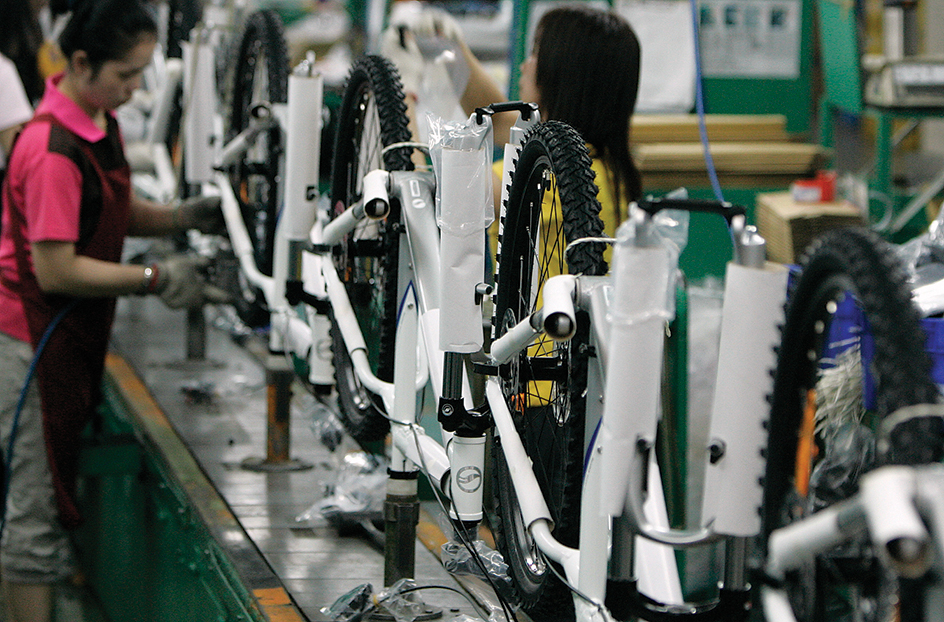
Taiwan exports more than it imports. Its main trading partners include China, Japan, South Korea, and the United States. Taiwan also trades with Hong Kong, a special administrative region of China. Taiwan is one of the leading investors of manufacturing in China. Many Taiwanese live in China or regularly travel to China for work.
Only about a fourth of Taiwan’s land can be farmed. The farmers have terraced many hills to provide more fields for growing rice and vegetables. By using fertilizers, farmers are able to harvest two or three crops a year from the same field. Taiwan’s most important crop is rice. Other agricultural products include bamboo, bananas, betel nuts, cabbages, citrus fruits, mangoes, pears, pineapples, sugar cane, sweet potatoes, and tea. Taiwan produces and exports orchids and other flowers. Farmers also raise chickens, dairy cattle, ducks, and hogs. The fishing industry catches squid and tuna. Aquaculture, the commercial raising of animals and plants that live in water, is important to Taiwan.
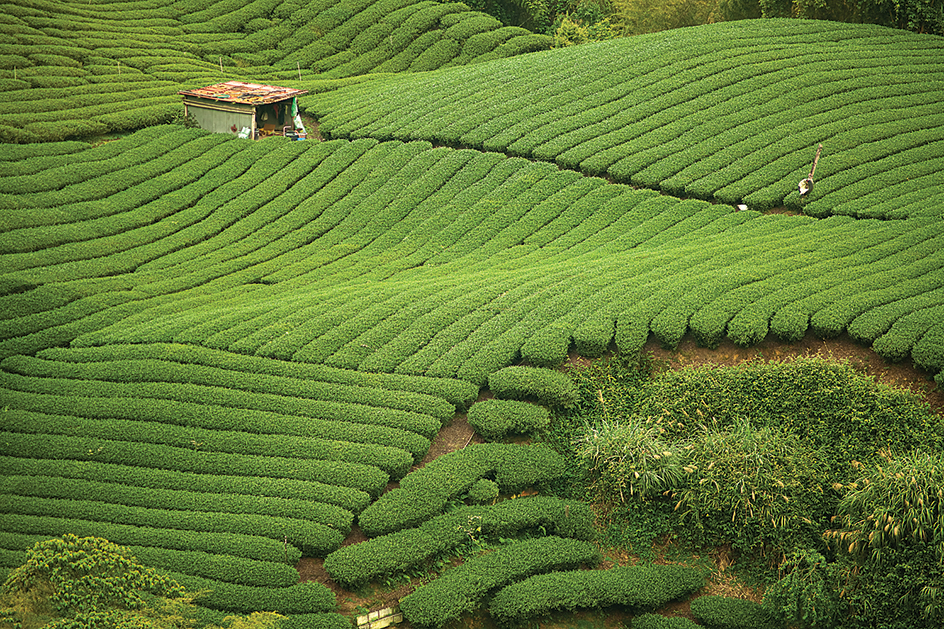
Taiwan has few mineral deposits. Lime, marble, natural gas, petroleum, and sulfur are mined in Taiwan.
Taiwan has a good network of roads, including expressways. Bus service is excellent. The government operates several railroad lines. A high-speed railway connects the cities of Kaohsiung, Taichung, and Taipei. Kaohsiung and Keelung are Taiwan’s chief seaports. Taiwan has international airports in Kaohsiung, Taichung, and near Taipei.
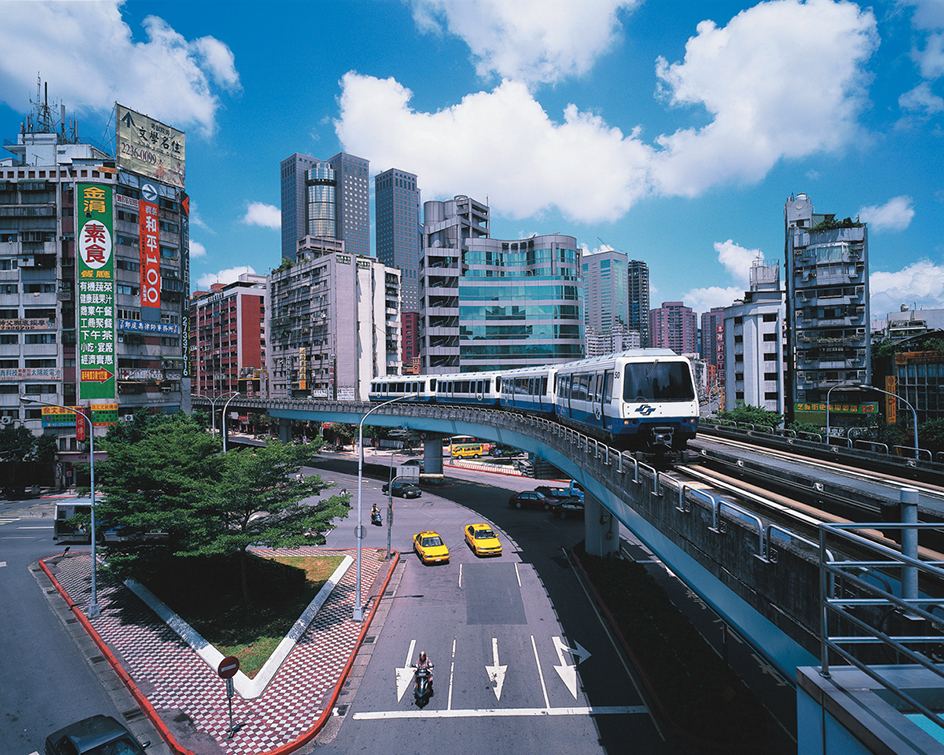
History.
Indigenous peoples were the first inhabitants of Taiwan. Some Chinese came to the island from the mainland as early as the 500’s, but large settlements did not begin until the 1600’s.
Dutch traders established a port settlement in 1624. From 1661 to 1662, Zheng Chenggong, a Chinese Ming dynasty official also known as Koxinga, drove them off the island. Manchu conquerors had overthrown the Ming dynasty in mainland China, and Zheng hoped to restore the dynasty to power. He wanted Taiwan as a base from which to attack the Manchus. However, the Manchus conquered Taiwan in 1683. Taiwan was then governed as a region under the jurisdiction of China’s Fujian province. It became a separate province in 1885.
Japan gained control of Taiwan after the Sino-Japanese War of 1894-1895. The Japanese developed Taiwan’s agriculture and industry and expanded its transportation networks. Chinese Nationalists took control of the island after World War II ended in 1945. Their harsh rule led to a violent uprising by native Taiwanese that began on Feb. 28, 1947. Troops arrived from the mainland and put down the revolt in what came to be known as the “February 28 Incident,” or the “2-28 Incident.”
In 1949, the Chinese Communists defeated the Chinese Nationalists and took control of the government on mainland China. On Dec. 8, 1949, the Nationalists, led by Chiang Kai-shek, moved their government to Taiwan and proclaimed Taipei their capital. The Nationalists ruled under martial law, which gave the president and the military increased legal and political powers. 
After the Korean War began in 1950, the United States said it would protect Taiwan against possible attack from mainland China. It sent air and naval forces to patrol the Taiwan Strait (then called the Formosa Strait). After Taiwan came under U.S. protection, the Chinese Communist government vowed to recover the island at any cost. The U.S. and Chinese Nationalist governments signed a mutual defense treaty in 1954. The Chinese Communists shelled Matsu and Quemoy heavily in 1954, 1955, and 1958, but they did not attempt to attack Taiwan itself. Taiwan received about $1 1/2 billion in U.S. economic and technical aid up to 1965. That year, Taiwan said its economy could stand on its own. But it continued to receive U.S. military aid for another decade.
In the early 1970’s, Taiwan expressed concern over improved relations between the United States and Communist China. In 1971, the United States announced it favored United Nations (UN) membership for the People’s Republic of China. But the United States also said that Nationalist China—a charter member of the UN—should retain its UN seat. In October 1971, the UN expelled the Nationalists and admitted the People’s Republic of China. President Chiang Kai-shek made no attempt to maintain UN membership because he refused to share an international forum with the Chinese Communists.
During the 1970’s, a number of nations ended their diplomatic relations with Taiwan and established ties with the People’s Republic of China. The United States ended its diplomatic relations with Taiwan at the end of 1978 and established diplomatic relations with the People’s Republic of China at the start of 1979. The mutual defense treaty between the United States and Taiwan ended on Dec. 31, 1979. Earlier that year, however, the United States had passed the Taiwan Relations Act, which sought to maintain peace and to continue cultural and commercial relations with Taiwan.
President Chiang Kai-shek died in 1975. Chiang’s son Chiang Ching-kuo, who had become premier in 1972, became the country’s most powerful leader after his father died. He was elected president of Taiwan in 1978 and reelected in 1984. Under Chiang Ching-kuo, Taiwan’s government carried out political reforms that increased democracy in the country. In 1987, the government ended martial law. President Chiang Ching-kuo died in 1988. He was succeeded by Vice President Lee Teng-hui, who continued the democratization process.
Until 1987, the Kuomintang (Nationalist Party) had been Taiwan’s only legal political party. Opposition parties were legalized that year. Multiparty elections were held in 1991 for the National Assembly—the body that was then responsible for amending the ROC Constitution—and in 1992 for the Legislative Yuan. The Kuomintang won a majority of seats in both elections and remained in control of the government.
In 1996, for the first time, Taiwanese voters directly elected their president. In the past, the National Assembly had elected the president. Voters elected President Lee Teng-hui to a four-year term. After Lee stepped down in 2000, Chen Shui-bian of the Democratic Progressive Party (DPP) was elected president. His election ended 50 years of Kuomintang rule. In 2004, Chen was reelected president by a narrow margin after surviving what appeared to be an assassination attempt the day before the election. In 2004 and 2008, an alliance led by the Kuomintang won a majority of seats in elections for the Legislative Yuan. In 2008, Kuomintang candidate and former Taipei mayor Ma Ying-jeou succeeded Chen as president. In 2009, Chen was convicted on charges of corruption and embezzlement and sentenced to life in prison. His prison sentence was later reduced. Ma was reelected in 2012. 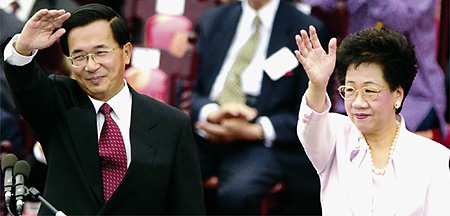
Tsai Ing-wen of the DPP won a presidential election held in 2016. The DPP won a majority of legislative seats in parliamentary elections held at the same time. Analysts saw these results as a rejection of the policies of President Ma and the Kuomintang. When she took office in May, Tsai became Taiwan’s first woman president. As president, Tsai emphasized the need to firmly maintain Taiwan’s own identity and form of government in the face of pressure from China. She was reelected in 2020. 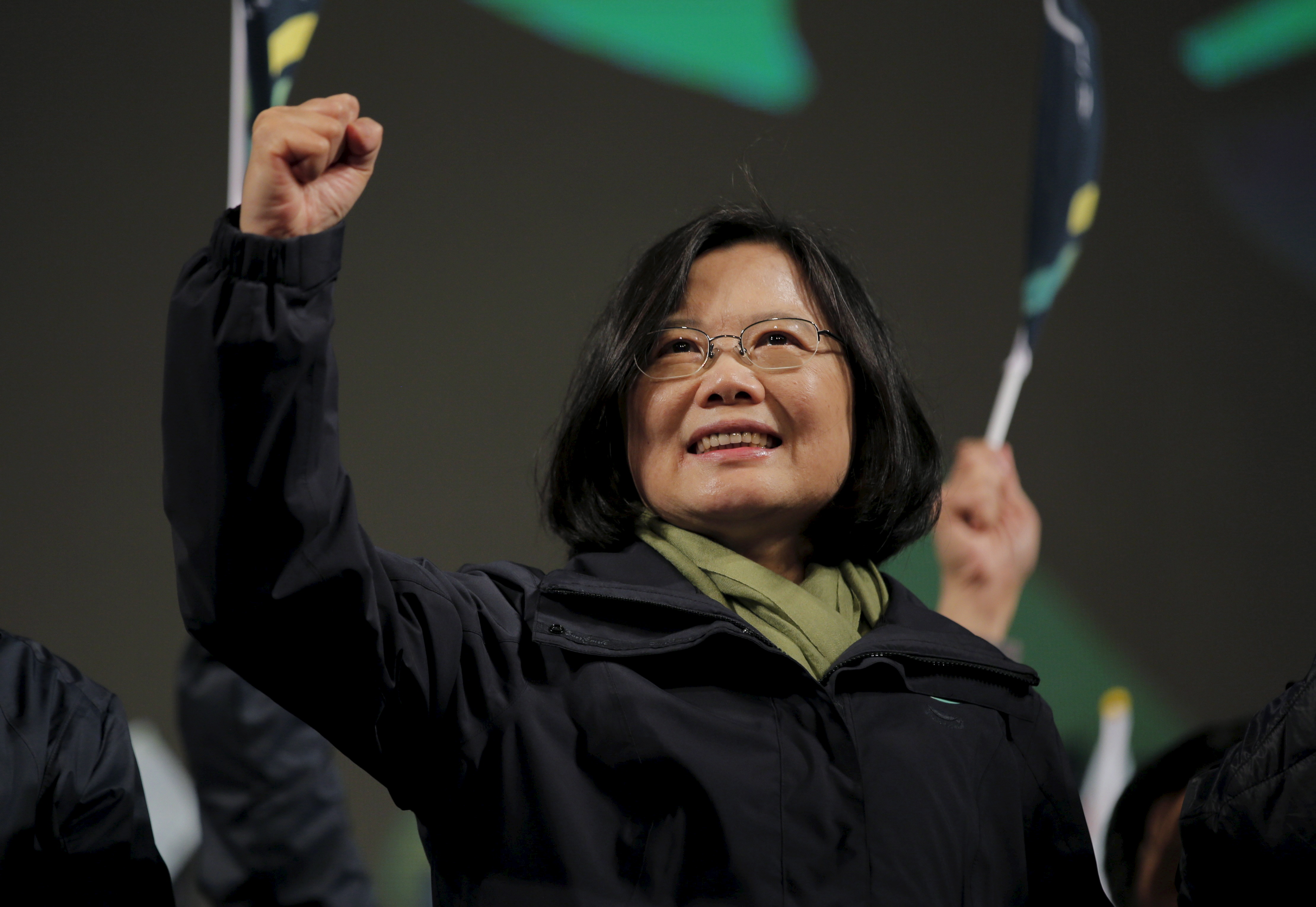
In early 2020, Taiwan became one of many countries facing a public health crisis as a result of the COVID-19 pandemic (worldwide epidemic). COVID-19, a sometimes fatal respiratory disease caused by a type of coronavirus, originated in China in late 2019. Taiwan’s experience during previous coronavirus outbreaks, especially an outbreak of severe acute respiratory syndrome (SARS) in 2003, helped shape its quick initial response to COVID-19. In early January 2020, Taiwan began conducting health screenings of people arriving from affected areas in China. It soon began screening arrivals from other areas as well. The first COVID-19 case in Taiwan was confirmed in late January. The government began to extensively test people for the virus and track cases of infection. People widely adopted such protective measures as wearing masks and social distancing. These actions helped limit the spread of the disease in Taiwan. In March 2021, Taiwan began to vaccinate its people against COVID-19. In 2022, the government eased restrictions and shifted to a goal of reducing rather than eliminating the new, more contagious Omicron variant (form) of the disease. By early 2023, there had been about 10 million confirmed cases of COVID-19 in Taiwan, and over 17,000 confirmed deaths from the disease.
In January 2024, Lai Ching-te, also known as William Lai, was elected president of Taiwan. Lai had served as vice president under President Tsai and, like her, had voiced support for Taiwan remaining effectively independent from China.
